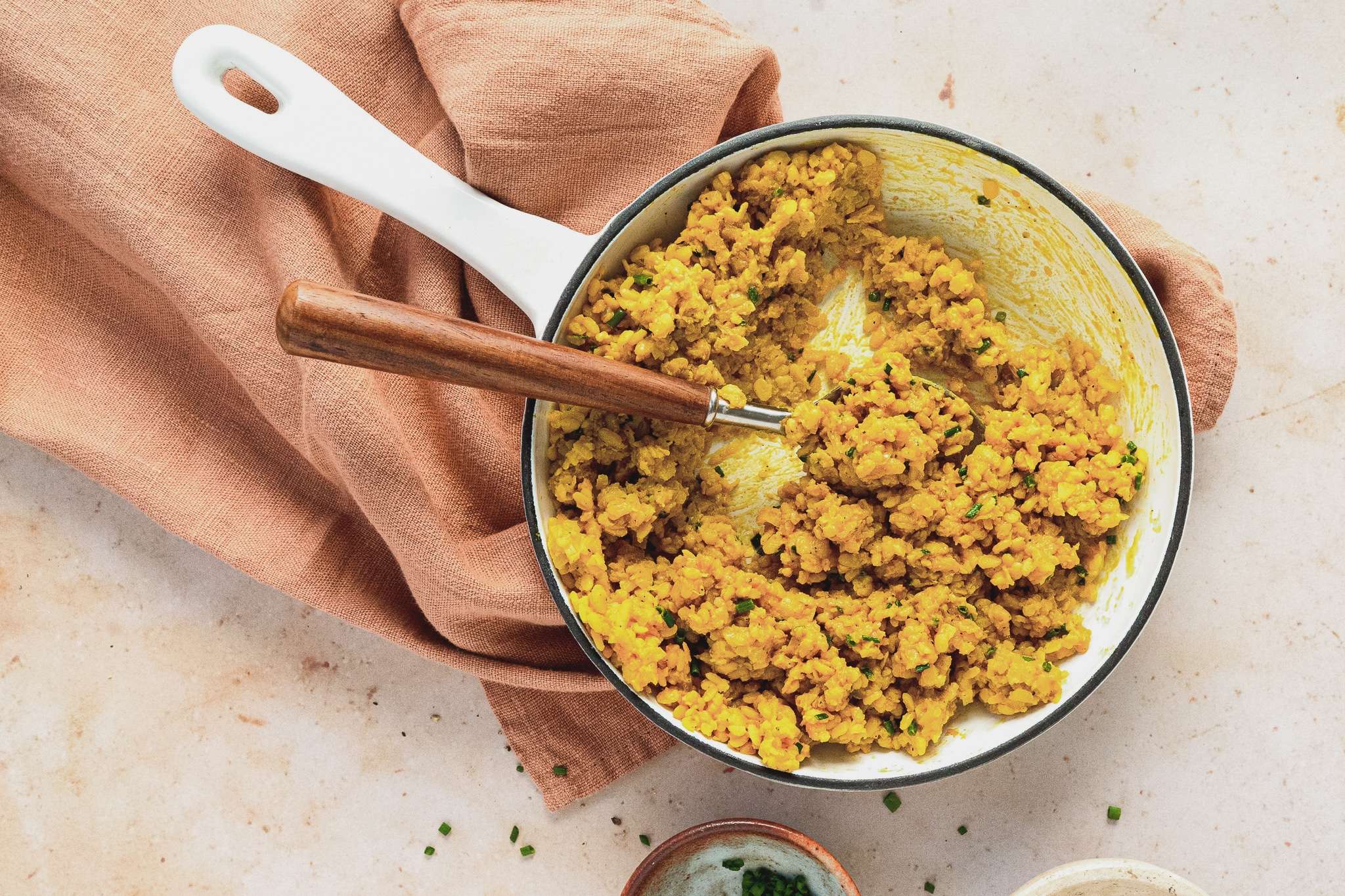For a sustainable twist on your morning eggs, try this egg-free breakfast scramble that uses mung beans instead of eggs or common vegan replacements like tofu.
I wanted to make an alt version of a scramble and use something extra nutritious. Split mung beans are incredible beans often seen in Indian or Filipinx cooking. But my intro to them was from that very realistic egg-like product that just came onto the market a couple years ago. Rather than trying to engineer an exact replica at home (which I did test, and I wasn’t too impressed), I thought ‘why don’t I eat these beans whole? They’re delicious and happen to look like scrambled eggs if I add all the same things from the tofu scram.
So voilà! This is super inexpensive, as you’ll be purchasing the dry beans and they only need a little soaking and some boiling. Adding coconut cream into the mix gives them some much-needed fat and a nice creamy texture.

Mung Bean Scramble
Ingredients
- 1 cup dried moong dal (split mung beans)
- 1 tsp sea salt, plus more to taste
- 1 tbsp avocado oil, neutral vegetable oil, or vegan butter
- ¼ cup minced shallot (about 1 shallot)
- 2 tsp minced garlic
- 2 tbsp nutritional yeast
- ½ tsp ground turmeric
- ½ tsp smoked paprika
- ½ tsp ground black pepper
- ¼ cup canned coconut milk
Optional add-ins
- use veggies you have that need to get eaten!
- ¼ cup finely chopped chives
- ½ tsp kala namak
Instructions
- Cover the beans with hot water in a large bowl and let them soak for 1 hour. Drain and then place beans in a large pot, cover with fresh water about 1 inch higher than the top of the beans, and add 1 teaspoon sea salt. Bring to a boil over high heat and cook for 20 minutes uncovered. Lower the heat if necessary to keep at a boil without boiling over, and stir occasionally. Once cooked, the beans should be slightly expanded. They should have a similar texture to canned lentils, slightly firm and not mushy. Drain any excess water after boiling, if necessary.
- Heat a nonstick pan over medium heat with the oil or vegan butter and sauté the shallot and garlic for about 1 minute until soft and fragrant. Add any chopped veggies you like just after cooking the shallot and garlic. Allow the veggies to mostly cook before adding the mung beans, as you don't want to overcook the beans or they will get quite mushy.
- Add the cooked beans, nutritional yeast, turmeric, paprika, and black pepper and stir to combine. Cook another 3 minutes, stirring occasionally.
- Stir in the coconut cream, allowing it to soften and melt on the bottom of the pan. Combine well and cook for about 1 more minute. Remove the pan from the heat and stir in the chives and kala namak or more sea salt to taste.
- Store in the fridge and consume within 3 days.
Reprinted with permission from Hot for Food All Day, by Lauren Toyota. Ten Speed Press 2021. All rights reserved.
Related on Ethos:


